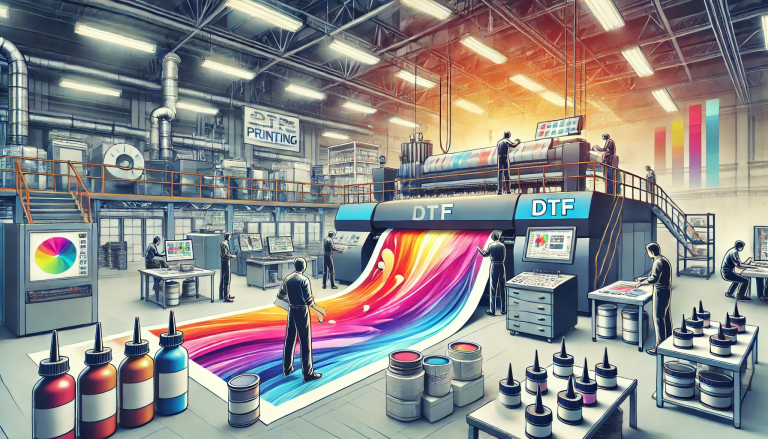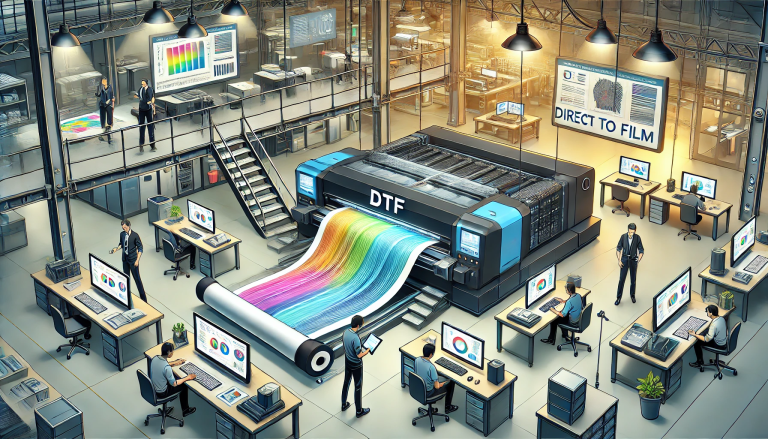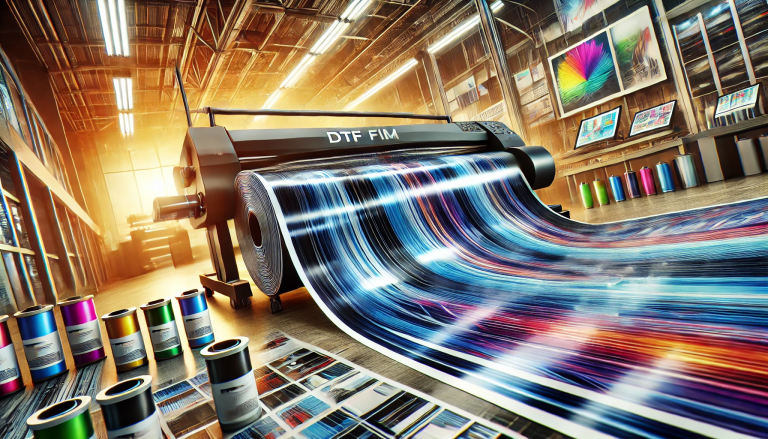“Discover the Difference: Is PET Film Printing the Same as Screen Printing?” -MAXDTF- Direct Film Transfer Factory, DTF Vinyl Manufacturer, Made in china
In the world of printing technologies, the choices available to businesses and professionals can be overwhelming. Two popular methods—printing on PET (Polyethylene Terephthalate) film and traditional screen printing—are often compared for their capabilities, applications, and overall effectiveness. While both methods have their unique advantages and use cases, they are fundamentally different in terms of process, materials, and outcomes. This article explores the key differences between printing on PET film and screen printing, highlighting their respective strengths and weaknesses to help you determine which method is best suited for your needs.
Understanding PET Film Printing
PET film printing, also known as Direct to Film (DTF) printing or film printing, is a relatively modern technique that uses a combination of digital printing and heat transfer technology. This method involves printing designs onto a special PET film using a DTF printer, applying an adhesive powder to the ink layer, and then transferring the printed film onto a substrate using a heat press.
Key Features of PET Film Printing:
- Digital Printing Process:
- Designs are created digitally and printed directly onto the PET film using CMYK inks. This allows for precise color reproduction and intricate details.
- Versatility:
- PET film printing is highly versatile, suitable for a wide range of substrates, including textiles, ceramics, wood, and plastics.
- Durable and Washable:
- The heat-activated adhesive ensures that the prints are durable, resistant to fading, and washable, making them ideal for garments and promotional items.
- Efficiency:
- The process is fast, with most designs being completed in a single pass.
- Initial Setup Costs:
- While the initial investment in DTF printers and materials can be high, the operational costs are relatively low once the setup is complete.
Understanding Screen Printing
Screen printing, on the other hand, is a traditional printing method that has been in use for decades. It involves creating a stencil (screen) for each color in the design, applying ink through the stencil onto the substrate, and then curing the ink to set the design.
Key Features of Screen Printing:
- Manual or Semi-Automatic Process:
- Screen printing can be done manually or with the help of automated equipment. It requires careful preparation of screens for each color.
- High-Quality for Large Runs:
- Screen printing is known for producing high-quality prints with excellent color vibrancy, especially for large-scale production runs.
- Limited to Flat or Slightly Curved Surfaces:
- This method is primarily used for flat or slightly curved substrates, such as t-shirts, posters, and banners.
- Durable and Long-Lasting:
- Screen-printed designs are highly durable and resistant to wear and tear, making them ideal for products that require long-lasting prints.
- Higher Per-Unit Costs for Small Runs:
- While screen printing is cost-effective for large batches, the setup costs (screen preparation) can be high for smaller runs.
The Key Differences Between PET Film Printing and Screen Printing
While both methods aim to create high-quality prints, there are significant differences between PET film printing and screen printing in terms of process, materials, applications, and cost efficiency.
1. Process and Workflow
- PET Film Printing:
- Involves a digital workflow, with designs being created and printed directly onto PET film. The process is automated and requires minimal manual intervention once the printer is set up.
- Screen Printing:
- Requires a manual or semi-automatic process, including stencil creation, ink application, and curing. Each color in the design necessitates a separate screen, increasing setup time.
2. Material Usage
- PET Film Printing:
- Uses PET film as the printing medium, along with specialized inks and adhesive powders for transfer. The film is reusable, making it an eco-friendly option.
- Screen Printing:
- Relies on liquid inks that are applied directly to the substrate. The screens used for printing are typically single-use, which can lead to waste.
3. Applications
- PET Film Printing:
- Suitable for a wide range of substrates, including textiles, ceramics, metals, and plastics. It is particularly popular for custom apparel and promotional items.
- Screen Printing:
- Best suited for flat or slightly curved surfaces, such as t-shirts, posters, and glassware. It is less versatile compared to PET film printing.
4. Cost Efficiency
- PET Film Printing:
- Offers cost-effective solutions for small to medium runs, as there are no setup costs for each design. The initial investment in equipment may be high, but operational costs are relatively low.
- Screen Printing:
- Cost-effective for large batches, but the setup costs for screens and the time required for manual intervention can make it expensive for smaller runs.
5. Speed and Time Efficiency
- PET Film Printing:
- Fast and efficient, with most designs being completed in a single pass. The heat transfer process is also quick, reducing overall production time.
- Screen Printing:
- Slower due to the need to prepare separate screens for each color and the manual or semi-automatic nature of the process.
6. Quality and Color Vibrancy
- PET Film Printing:
- Produces vibrant and accurate colors, with the ability to create intricate designs and gradients. The prints are durable and resistant to fading.
- Screen Printing:
- Known for producing bold and vibrant colors, especially with thicker ink layers. However, it may struggle with fine details and gradients.
When to Use PET Film Printing vs. Screen Printing
The choice between PET film printing and screen printing largely depends on the specific requirements of the project. Here are some guidelines:
Choose PET Film Printing If:
- You need versatility across various substrates.
- You are working on small to medium production runs.
- You require intricate designs with fine details and gradients.
- You prioritize speed and efficiency in the printing process.
Choose Screen Printing If:
- You are producing large batches of flat or slightly curved items.
- You need highly durable and long-lasting prints.
- You prioritize cost-effectiveness for large-scale production.
- You are comfortable with a manual or semi-automatic process.
The Future of Both Technologies
As technology continues to evolve, both PET film printing and screen printing are likely to see improvements and innovations. PET film printing, with its digital foundation, is poised to become more accessible and cost-effective, appealing to a broader range of businesses. Meanwhile, screen printing may focus on automation and sustainability to reduce waste and improve efficiency.
Conclusion
In summary, while PET film printing and screen printing share the common goal of creating high-quality prints, they are fundamentally different in their processes, materials, and applications. PET film printing offers a versatile, efficient, and cost-effective solution for a wide range of substrates and small to medium runs, while screen printing remains the go-to method for large batches of flat items with bold, durable prints. By understanding the strengths and limitations of each technology, businesses and professionals can make informed decisions about which method best suits their needs. Whether you choose the modern precision of PET film printing or the traditional reliability of screen printing, both methods continue to play a vital role in the ever-evolving world of printing.






